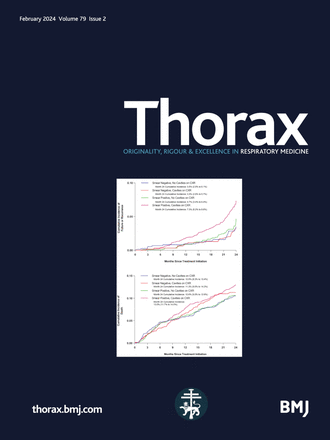危重疾病的分子表型赋予撒哈拉以南非洲的预后和生物富集:乌干达的一项前瞻性队列研究
IF 9
1区 医学
Q1 RESPIRATORY SYSTEM
引用次数: 0
摘要
危重疾病分子表型在低收入和中等收入国家(LMICs)的普遍性尚不清楚。我们发现,来自高收入国家的分子表型(高炎症和低炎症,反应性和非炎症)通过生理严重程度,死亡风险和关键病理生物学域的失调对乌干达败血症患者进行分层。包括LMIC床边可用数据的分类器模型适度区分表型分配(接受者工作特征曲线下面积(AUROC) 0.80,高炎症与低炎症的95% CI 0.71至0.90;AUROC为0.74,95% CI为0.65 - 0.83(反应性与非炎症性)。我们的研究结果强调了全球相关的危重疾病临床分子分类的潜力,并可能支持将不同人群纳入以表型为目标的危重护理试验。提高实验室能力和获得快速生物标志物检测可能是优化低mic环境中表型分层的必要条件。本文章由计算机程序翻译,如有差异,请以英文原文为准。
Molecular phenotypes of critical illness confer prognostic and biological enrichment in sub-Saharan Africa: a prospective cohort study from Uganda
The generalisability of critical illness molecular phenotypes to low- and middle-income countries (LMICs) is unknown. We show that molecular phenotypes derived in high-income countries (hyperinflammatory and hypoinflammatory, reactive and uninflamed) stratify sepsis patients in Uganda by physiological severity, mortality risk and dysregulation of key pathobiological domains. A classifier model including data available at the LMIC bedside modestly discriminated phenotype assignment (area under the receiver operating characteristic curve (AUROC) 0.80, 95% CI 0.71 to 0.90 for hyperinflammatory vs hypoinflammatory; AUROC 0.74, 95% CI 0.65 to 0.83 for reactive vs uninflamed). Our findings highlight the potential for a globally relevant, clinicomolecular classification of critical illness and may support the inclusion of diverse populations in phenotype-targeted critical care trials. Improved laboratory capacity and access to rapid biomarker assays are likely necessary to optimise phenotype stratification in LMIC settings.
求助全文
通过发布文献求助,成功后即可免费获取论文全文。
去求助
来源期刊

Thorax
医学-呼吸系统
CiteScore
16.10
自引率
2.00%
发文量
197
审稿时长
1 months
期刊介绍:
Thorax stands as one of the premier respiratory medicine journals globally, featuring clinical and experimental research articles spanning respiratory medicine, pediatrics, immunology, pharmacology, pathology, and surgery. The journal's mission is to publish noteworthy advancements in scientific understanding that are poised to influence clinical practice significantly. This encompasses articles delving into basic and translational mechanisms applicable to clinical material, covering areas such as cell and molecular biology, genetics, epidemiology, and immunology.
 求助内容:
求助内容: 应助结果提醒方式:
应助结果提醒方式:


